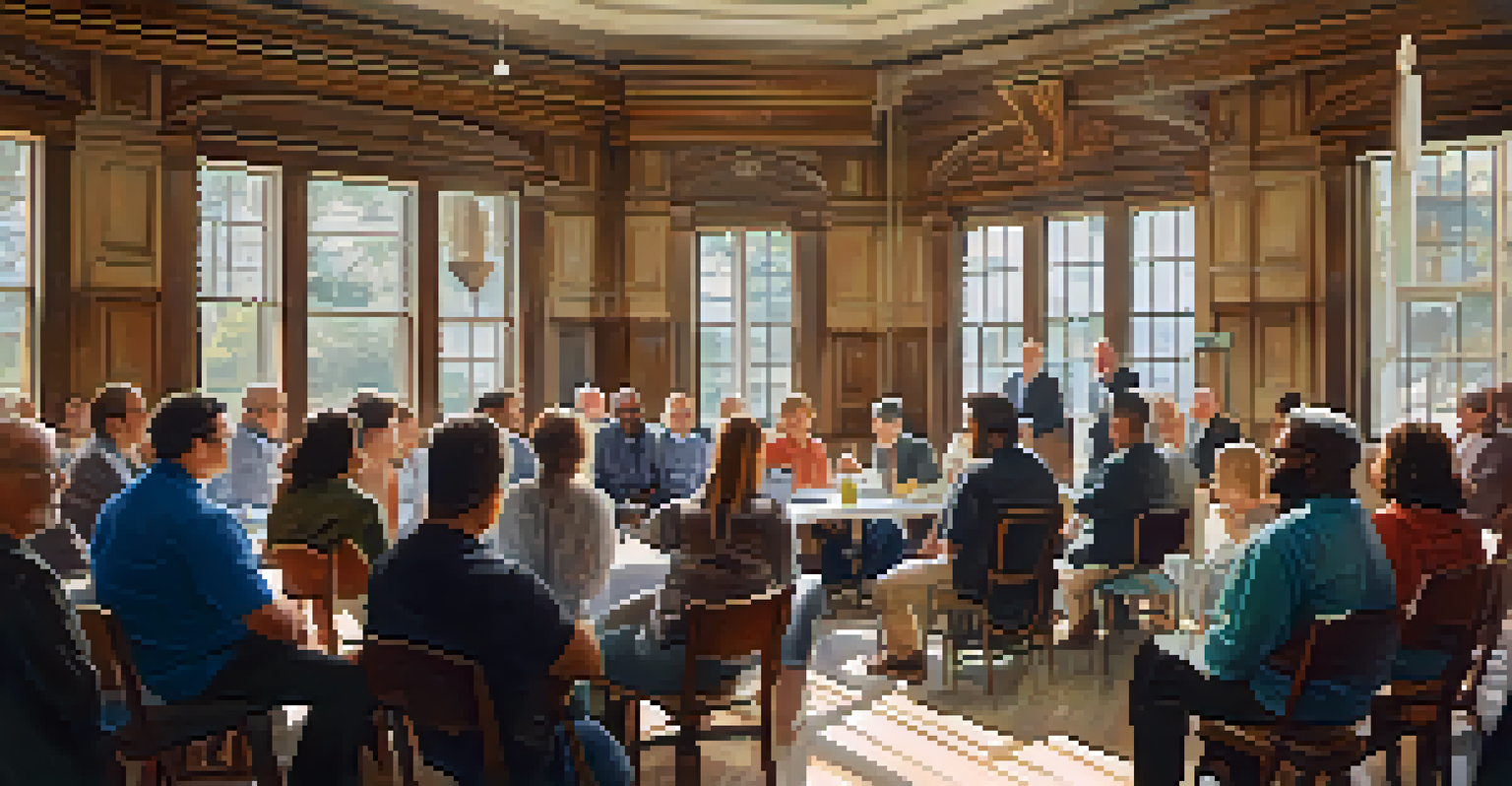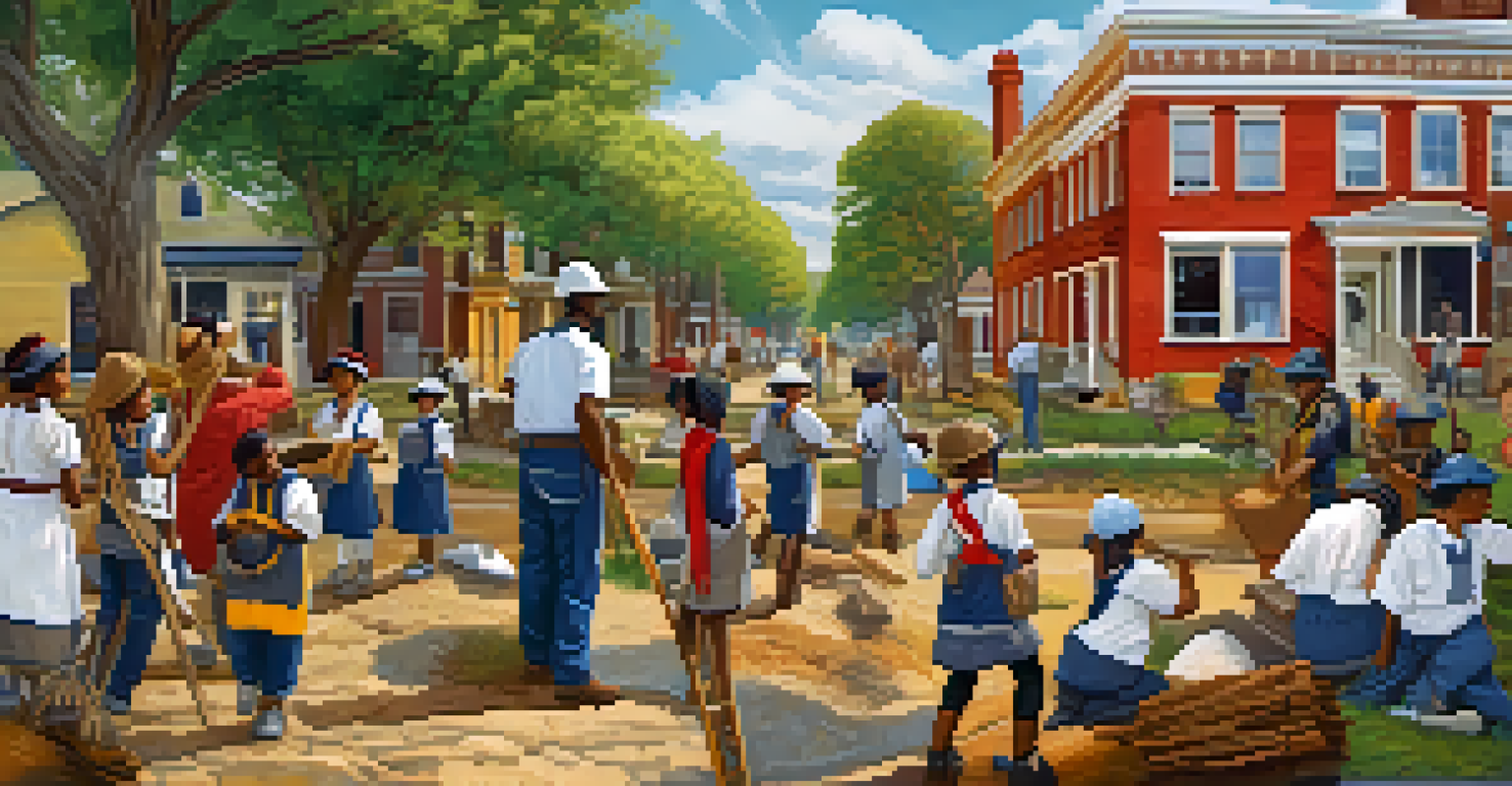The Importance of Community Engagement in Heritage Preservation

Understanding Heritage Preservation and Its Significance
Heritage preservation focuses on protecting and maintaining sites, objects, and traditions that hold cultural significance. This can include historical buildings, archaeological sites, and even local customs. The goal is to ensure that future generations can appreciate and learn from these important aspects of our past.
Heritage is our legacy from the past, what we live with today, and what we pass on to future generations.
When we talk about heritage, we're not just referring to physical structures; we're also preserving stories and values that shape our community identity. Think of it like keeping a family photo album—each image tells a story that connects you to your roots. Without preservation, these stories risk being lost or distorted over time.
By engaging with our heritage, we create a sense of belonging and pride within our communities. When people understand the importance of their heritage, they are more likely to take action to protect it, thereby fostering a collective responsibility for its preservation.
The Role of Community Engagement in Heritage Preservation
Community engagement in heritage preservation is all about involving local individuals and groups in the decision-making process. This can take many forms, from public meetings to participatory workshops, where community members share their insights and preferences. By actively involving the community, we ensure that the preservation efforts reflect the values and needs of those who have a stake in the heritage.

When communities feel that their voices matter, they become more invested in preserving their heritage. This investment can manifest in various ways, such as volunteering for restoration projects, participating in educational programs, or advocating for policies that protect local sites. It's like planting a seed; with care and attention, it can grow into something beautiful and lasting.
Heritage Preservation Fosters Identity
Engaging with our heritage helps create a sense of belonging and pride within communities.
Moreover, community engagement fosters a sense of ownership over heritage sites, making it less likely for these treasures to fall into neglect. When people feel connected to their heritage, they take pride in protecting it, ensuring its survival for future generations.
Benefits of Active Community Participation in Preservation Efforts
One of the primary benefits of community participation in heritage preservation is the wealth of knowledge that locals bring to the table. Residents often have unique insights and historical context that professionals might overlook. By tapping into this local knowledge, preservation efforts can be more accurate and meaningful.
The preservation of heritage is not just about saving the past; it’s about enabling the future.
Additionally, when communities are involved, preservation projects tend to be more sustainable. Engaged citizens are more likely to advocate for ongoing maintenance and care, ensuring that sites remain in good condition long after restoration efforts are complete. It's similar to a team working together towards a common goal; everyone contributes their strengths to achieve success.
Finally, community engagement can enhance social cohesion. When people come together to work on preservation projects, they build relationships and strengthen their networks. This sense of unity can lead to a more vibrant community where individuals are more willing to collaborate and support one another.
Creating Opportunities for Community Involvement
To foster community engagement, it’s crucial to create accessible opportunities for involvement. This can include organizing heritage festivals, workshops, and volunteer days that invite locals to participate. By making these events appealing and inclusive, you can draw in a diverse group of participants who may not have previously engaged with their heritage.
Another effective approach is leveraging digital platforms to reach broader audiences. Social media, websites, and community forums can serve as powerful tools for sharing information and gathering feedback. By using these platforms, heritage organizations can engage with those who may not attend in-person events but still care about preserving their cultural legacy.
Community Involvement Enhances Success
Active participation from locals leads to more sustainable and meaningful preservation efforts.
Moreover, collaborations with schools and educational institutions can introduce younger generations to the importance of heritage preservation. By incorporating local history into school curriculums, we can instill pride and awareness in the youth, ensuring that they continue the work of preserving their heritage.
Challenges to Community Engagement in Heritage Preservation
Despite its many benefits, community engagement in heritage preservation faces several challenges. One significant hurdle is apathy; many individuals may feel disconnected from their heritage or believe that their involvement won't make a difference. Overcoming this mindset requires consistent outreach and education about the importance of local heritage.
Another challenge is the potential for conflicting interests within the community. Different groups may have varying opinions on how best to preserve a site or what aspects of heritage are most important. Facilitating open discussions and finding common ground is essential in navigating these differences. It’s akin to managing a family reunion—everyone has their own preferences, but the goal is to create a memorable event for all.
Lastly, securing funding for community-driven preservation initiatives can be difficult. Many projects rely on grants or donations, which can be unpredictable. Building strong partnerships with local businesses and organizations can help in securing the necessary resources to support these efforts.
Case Studies of Successful Community Engagement
There are numerous examples of successful community engagement in heritage preservation that showcase its effectiveness. For instance, the revitalization of the historic district in a small town often involved local residents working alongside preservation professionals to restore buildings. This hands-on approach not only led to the preservation of the area but also fostered pride and ownership among community members.
Another inspiring case is the involvement of indigenous communities in preserving their cultural heritage. Many tribes have successfully collaborated with local governments and organizations to protect sacred sites and traditional practices. By advocating for their rights and sharing their knowledge, these communities have become powerful stewards of their heritage.
Inclusivity is Key for Future Efforts
Embracing diverse voices in heritage preservation enriches our understanding and strengthens community bonds.
These case studies highlight that when communities come together, they can achieve remarkable outcomes. The collaborative efforts lead not only to the preservation of heritage but also to strengthened community bonds and a shared sense of identity.
The Future of Community Engagement in Heritage Preservation
As we look ahead, the future of community engagement in heritage preservation appears promising. With advancements in technology, there are more tools available than ever to facilitate participation and outreach. Virtual reality tours of heritage sites or interactive online platforms can engage a broader audience and spark interest in local heritage.
Moreover, there is a growing recognition of the importance of inclusivity in preservation efforts. This means actively seeking out diverse voices and perspectives, particularly from marginalized communities. By ensuring that all voices are heard, we can create a more comprehensive and representative understanding of our collective heritage.

Ultimately, fostering community engagement in heritage preservation is not just about protecting the past; it’s about empowering communities for the future. As we continue to embrace collaboration and inclusivity, we can ensure that our heritage remains a vibrant and integral part of our identity.